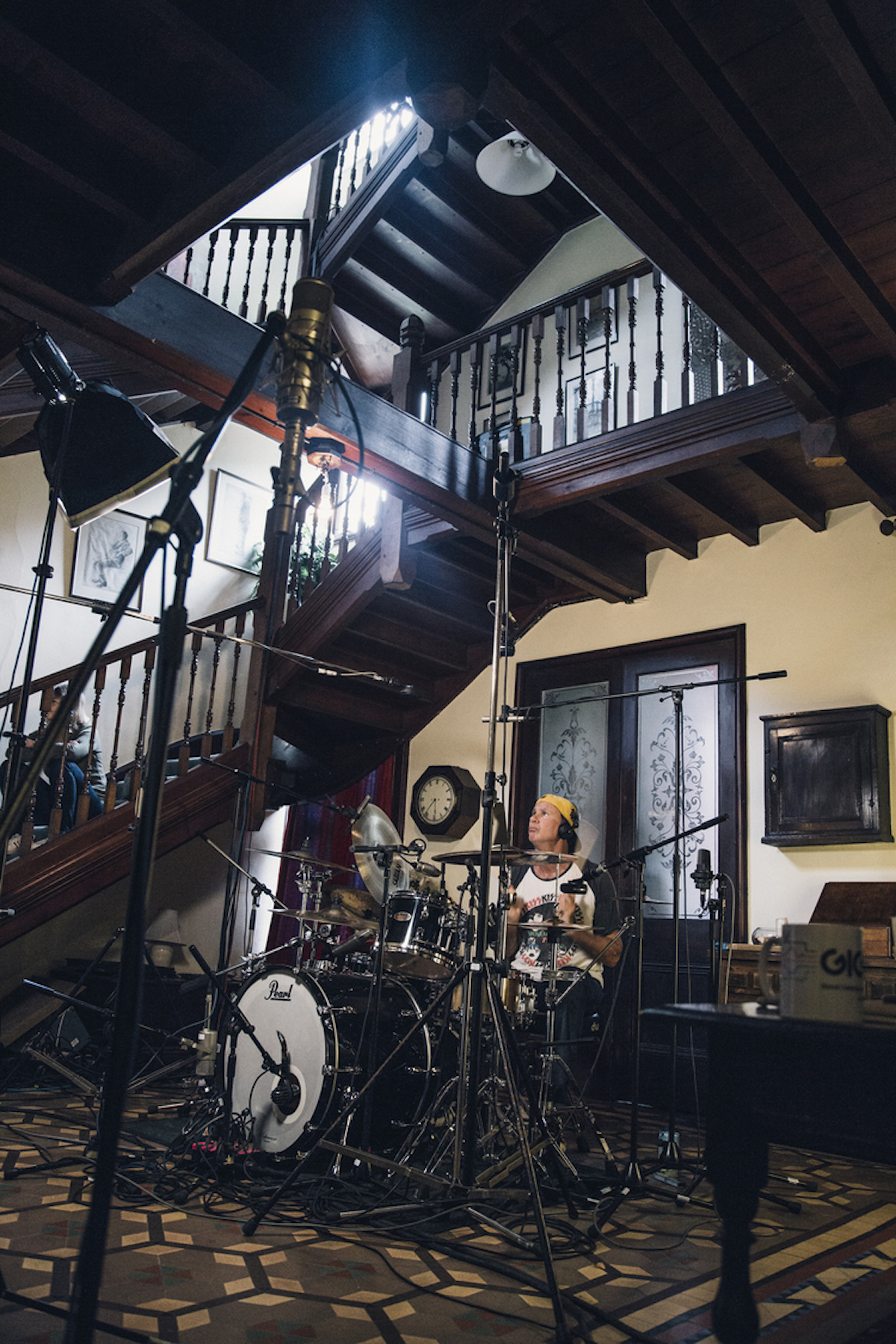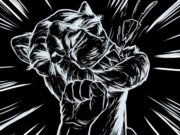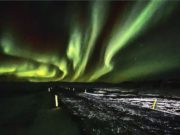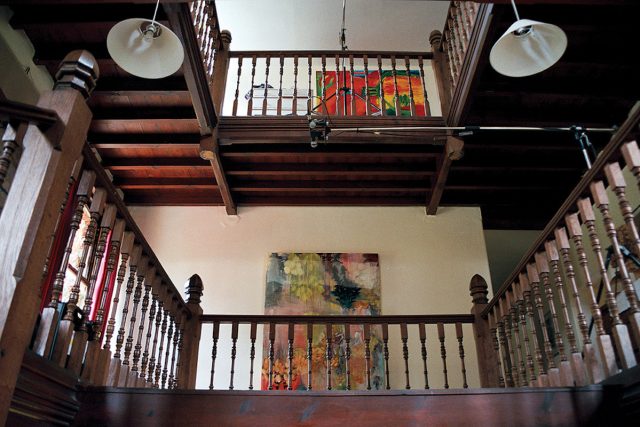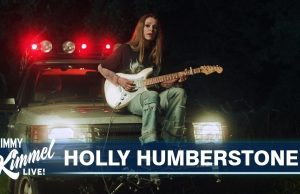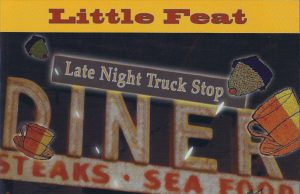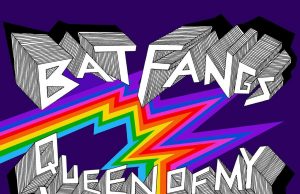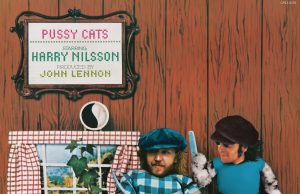 The drum sound on Led Zeppelin’s When The Levee Breaks might be the GOAT. Goddamn huge, and such a cool performance. The band knew it; they saved it for the very last track on their 1971 untitled masterpiece often referred to as Led Zeppelin IV. That record has gone platinum 24 times, according to the Recording Industry Association of America. That’s 24 million albums and counting. More than enough to give everyone in Toronto three copies of it. The whole record has incredible drums, which is probably why two of the songs start with solo drum intros — When The Levee Breaks being one of those.
The drum sound on Led Zeppelin’s When The Levee Breaks might be the GOAT. Goddamn huge, and such a cool performance. The band knew it; they saved it for the very last track on their 1971 untitled masterpiece often referred to as Led Zeppelin IV. That record has gone platinum 24 times, according to the Recording Industry Association of America. That’s 24 million albums and counting. More than enough to give everyone in Toronto three copies of it. The whole record has incredible drums, which is probably why two of the songs start with solo drum intros — When The Levee Breaks being one of those.
The intro (mostly) has been sampled many times — namely by The Beastie Boys (twice) as well as by Eminem (twice), Björk, Massive Attack, Dr. Dre, Beyonce, Ice-T, J. Cole, DJ Shadow, Mike Oldfield (twice), Anthrax, Billy Idol, Chemical Brothers, Vanilla Ice, Kid Rock (three times), Public Enemy, Butthole Surfers, Lords Of Acid (twice), Erasure, Tea Party, Everclear, Jesus Jones, Lisa Lisa, The Clash, Evanescence, Caspian… and around 230 others. And those are just the legal ones.
So why does this drum track sound so good? The answer is twofold: High ceilings and good fortune.
In the winter of 1970-71, Led Zeppelin decamped to the village of Headley in southern England. Their destination was a vacant, three-storey building which was built in 1795 as a workhouse for the poor, homeless or orphaned. Now more famous because of Zeppelin and several other bands, the structure was the scene of a historic riot in 1830 before it was purchased and converted into a private residence in 1870 by a local builder who named it Headley Grange. It went through several owners until the early 1960s when it was leased out and used as a student hostel.
This is how Zeppelin’s people heard of it. The year before, Jimmy Page and Robert Plant made a fruitful retreat to Bron-Yr-Aur Cottage in Wales, where Plant’s family used to vacation when he was young. The pair wrote much of Led Zeppelin III there in 1970. So, it was decided they needed to do that again, but this time somewhere bigger than the tiny, remote Bron-Yr-Aur — somewhere with enough space for the entire band and a crew of recording engineers to stay as well. The plan was to write, rehearse and record tracks which would end up on the next album. The Rolling Stones’ mobile recording truck was brought in, cables were run through doors in and out of the building — or in some cases, microphones were simply set up on the lawn.
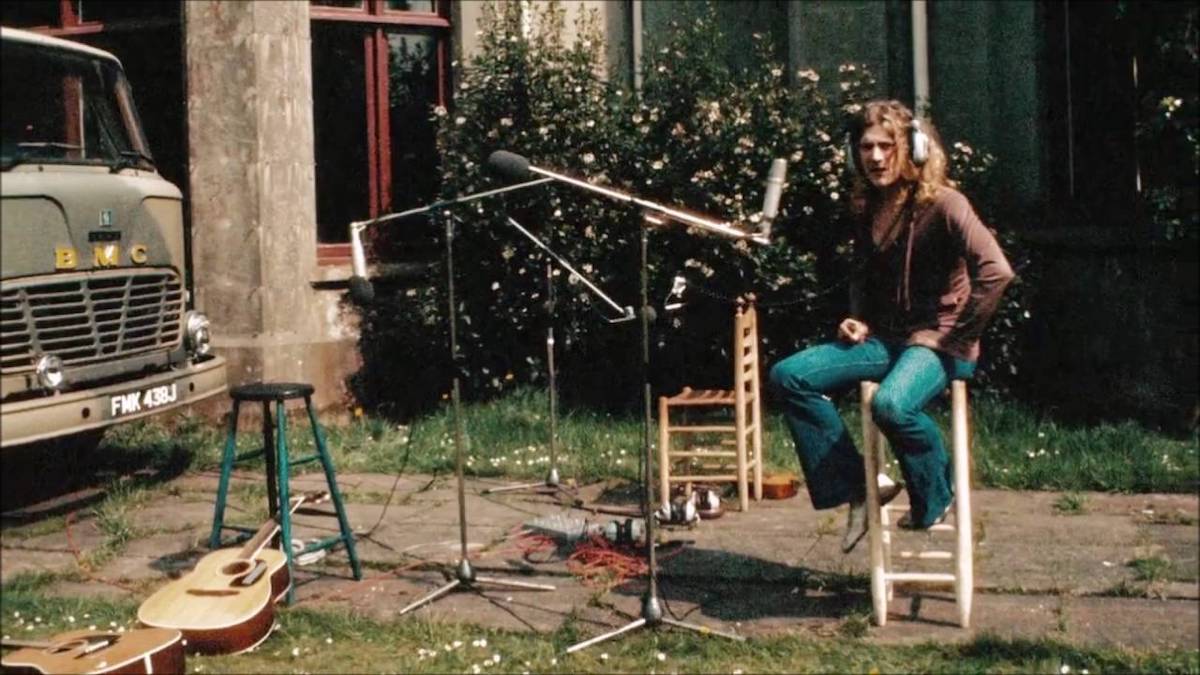
During the stay, drummer John Bonham got a new set of Ludwigs which were delivered to Headley Grange and set up by his drum tech in the hallway near the entrance. The space was directly below the wooden staircase going up three floors, creating a spectacularly high ceiling. When Bonzo was trying out his new kit, Page was struck by just how fantastic it sounded in this space, so that’s where they decided to leave them for recording. Thus the huge room echo heard on the drums in When The Levee Breaks.
If you want to see the space, you can’t — it’s a private home now. Nothing’s been recorded there for 40 years. But there’s a whole bit in the movie It Might Get Loud where Page revisits Headley Grange and talks about how engineer Andy Johns set some of the mics up off the railings on the floor overhead, looking down on the drums. Audio nerds will love this: those mics were two Beyer M160 hypercardioid ribbon mics, put through an Audio & Design F600 limiter for compression and then fed through a tape delay. The iconic, classic Stairway To Heaven was also recorded at Headley Grange. It could have been called Stairwell To Heaven. The setup was recreated in 2015 for Red Hot Chili Peppers drummer Chad Smith for Spitfire Audio — a British sample library. The goal was to make Levee drum samples available to all. The Grange can be purchased as a download.
The other notable Grange reference on Led Zeppelin IV was the opening track Black Dog — named for the Labrador retriever hanging around the property.
When the album came out, word got around about Headley Grange. Other bands wanted the retreat, no studio, big drum sound, black dog experience. One of those was Genesis, who had a pretty talented drummer of their own. I’m not sure if Phil Collins’ kit was set up in the same location as Bonham’s, but they didn’t end up recording The Lamb Lies Down On Broadway there anyway — apart from demos. You can buy bootlegs of those Headley Grange sessions, or listen to them here:
Instead of doing the album tracks at the Grange, the band opted for a different non-studio location — Glaspant Manor in Wales, where they set up their own mobile truck on loan from Island Records. They were very happy with the result. Lamb Lies Down certainly has the best-sounding drums of any Genesis record up to that point.
Genesis were hoping Headley Grange would be a team-building experience. As such, they decided before doing any writing or recording that they wanted their next album to be both a concept record and a double album. Collins, guitarist Steve Hackett, bassist and guitarist Mike Rutherford, vocalist Peter Gabriel and keyboardist Tony Banks assembled at the Grange after their 1973 Selling England By The Pound Tour, where they began writing the new album.
It was not the best experience. The Grange didn’t really have heat but it did have rats… or Carpet Crawlers, you might say. Oh, and the place was haunted. At least, that’s according to both Page and Plant, and some members of Genesis who had trouble sleeping there as a result.
Gabriel had a concept, so he went off to one part of the estate to write lyrics while the other band members jammed. So right away, The Grange caused isolation and friction. Gabriel left twice — once to collaborate with Exorcist director Bill Friedkin about a screenplay idea, and later to be with his wife while she gave birth to their first child. It was a difficult, touch-and-go delivery. It would be Gabriel’s last album with the band.
Zeppelin weren’t the first band to use the space for rehearsals and recording. I’m not sure who was, to be honest. English rock band Help Yourself resided there from 1971 to 1973. Zeppelin labelmates Bad Company recorded their eponymous debut album there in 1973. The same year, The Pretty Things recorded parts of their album Silk Torpedo at Headley Grange. It’s where Ozark Mountain Daredevils did their debut album in 1973 as well.
Zeppelin returned in January/February 1974 to do a bunch of tracks for Physical Graffiti: Custard Pie, Kashmir (using the same stairwell drum setup), In My Time Of Dying, Trampled Underfoot, In The Light, Ten Years Gone, Night Flight, Boogie With Stu and Sick Again. Ian Dury and Elvis Costello recorded there in 1976 and Clover in 1977 and 78. It taught them all to weep and moan.
• • •
Area Resident is an Ottawa-based journalist, recording artist, music collector and re-seller. Hear (and buy) his music on Bandcamp, email him HERE, follow him on Instagram and check him out on Discogs.
